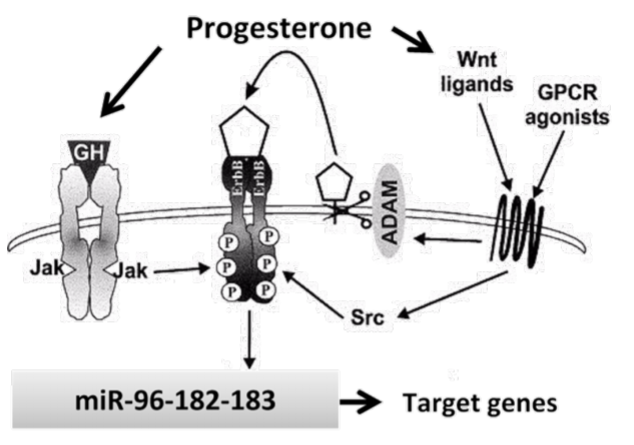
Get access to all handy features included in the IVIS website
- Get unlimited access to books, proceedings and journals.
- Get access to a global catalogue of meetings, on-site and online courses, webinars and educational videos.
- Bookmark your favorite articles in My Library for future reading.
- Save future meetings and courses in My Calendar and My e-Learning.
- Ask authors questions and read what others have to say.
MiRNA's, a risk factor for canine mammary cancer metastasis?
Steenwinkel N.B., Timmermans-Sprang...
Get access to all handy features included in the IVIS website
- Get unlimited access to books, proceedings and journals.
- Get access to a global catalogue of meetings, on-site and online courses, webinars and educational videos.
- Bookmark your favorite articles in My Library for future reading.
- Save future meetings and courses in My Calendar and My e-Learning.
- Ask authors questions and read what others have to say.
Read
Introduction
Female dogs have shown to be great value in the investigation of breast cancer development (1). Female dogs are prone to hormone-induced mammary cancer, and early castration leads to a decreased incidence of mammary carcinomas. In dogs and humans progesterone stimulates the local expression of growth hormone (GH), which has been shown to increase the amount of stem cells in human breast epithelium (figure 1). Progesterone also stimulates Wnt expression, which contributes to both stemness and metastasis.
MicroRNA’s (miRNA’s) are small non-coding RNA molecules that stimulate specific mRNA breakdown, and may be a risk biomarker of breast cancer metastasis.

Figure 1. Jan A. Mol, Elpetra P. M. Timmermans-Sprang
Aim of the study
The aim of the study is to investigate which microRNA’s are responsible for mammary cancer malignancy, to investigate if these miRNA’s form reliable markers for malignancy and if they can be used to monitor the effect of systemic cancer therapy.
Material and methods
In 12 canine mammary cell lines the expression of a miRNA cluster (2) related to cell proliferation and metastasis is investigated. TOPFOP, qPCR and Western Blot, MTT and scratch assays will be used to investigate cell viability, target gene expression and effect on migration. Next antisense oligonucleotides (ASO’s), which are potential new drugs for treatment of cancer patients will be developed to investigate their influence on target gene expression, cell growth and cell migration.
Results
MiRNA’s have shown to be important regulators of carcinogenesis, and specific cellines high in Wnt signalling have shown an increased expression of miRNA cluster 96-182-183.
Conclusions
Breast cancer is the main cause of death in western world women. If it is possible to use microRNA’s as cancer markers or to selectively target cancer cells with ASO’s this would bring us one step closer to a world without cancer deaths.
References
1. Liu D, Xiong H, Ellis AE, Northrup NC, Rodriguez CO,Jr, O’Regan RM, Dalton S, Zhao S. Molecular homology and difference between spontaneous canine mammary cancer and human breast cancer. Cancer Res 2014, 74(18):5045-5056.
2. Zhang W, Qian P, Zhang X, Zhang M, Wang H, Wu M, Kong X, Tan S, Ding K, Perry JK, Wu Z, Cao Y, Lobie PE, Zhu T. Autocrine/Paracrine Human Growth Hormone-stimulated MicroRNA 96-182-183 Cluster Promotes Epithelial-Mesenchymal Transition and Invasion in Breast Cancer. J Biol Chem. 2015 May 29;290(22):13812-29.
Get access to all handy features included in the IVIS website
- Get unlimited access to books, proceedings and journals.
- Get access to a global catalogue of meetings, on-site and online courses, webinars and educational videos.
- Bookmark your favorite articles in My Library for future reading.
- Save future meetings and courses in My Calendar and My e-Learning.
- Ask authors questions and read what others have to say.


Comments (0)
Ask the author
0 comments